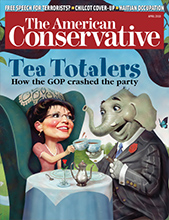Neocons Target Rand Paul
Posted on March 17th, 2010
by Daniel McCarthy |
|
Rand Paul has a double-digit lead over his primary opponent in the race for the GOP Senate nomination in Kentucky. As the Politico notes, “A win by Paul, a Bowling Green ophthalmologist, would represent the first true electoral success of the tea party movement,” which has adopted Rand as a leader. The neoconservatives who ran the GOP into the ground over the last decade aren’t too happy about what that might mean:
Recognizing the threat, a well-connected former aide to Vice President Dick Cheney convened a conference call last week between Grayson and a group of leading national security conservatives to sound the alarm about Paul.
“On foreign policy, [global war on terror], Gitmo, Afghanistan, Rand Paul is NOT one of us,” Cesar Conda wrote in an e-mail to figures such as Liz Cheney, William Kristol, Robert Kagan, Dan Senor and Marc Thiessen.
Rand Paul certainly isn’t a Kristol, Kagan, or former Bush apparatchik, nor is he an interventionist, though as the Politico notes he disagrees with his father on closing down Guantanamo and a few other issues. That doesn’t reassure the ultrahawks, however, and they’re not the only ones upset:
Paul’s lead has also caught the attention of the pro-Israel community, a group not known for paying close attention to Bluegrass State politics.
“Despite the hard financial times and plenty of incumbents who are asking for help, there is a lot of support for [Republican Senate candidate] Trey Grayson, and it has definitely become a priority,” said one political operative who works on Israel issues.
As I mention below, neoconservatives still set the foreign-policy agenda for the GOP. But they’re genuinely worried that the combination of a grassroots movement and an independently-minded candidate will deliver a blow to their power — especially if Rand Paul becomes only the first of many by showing that there is an alternative to Bushes and Kristols.


